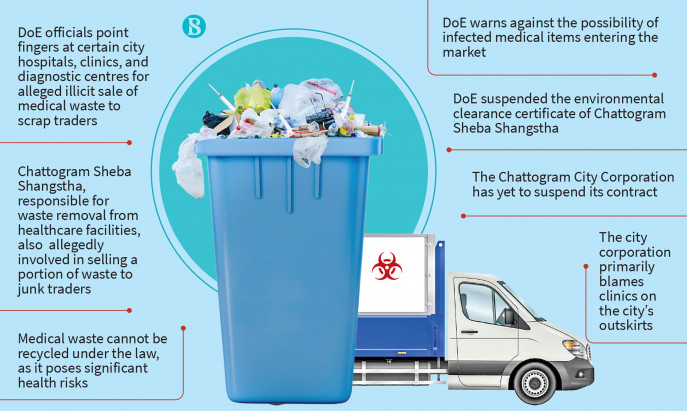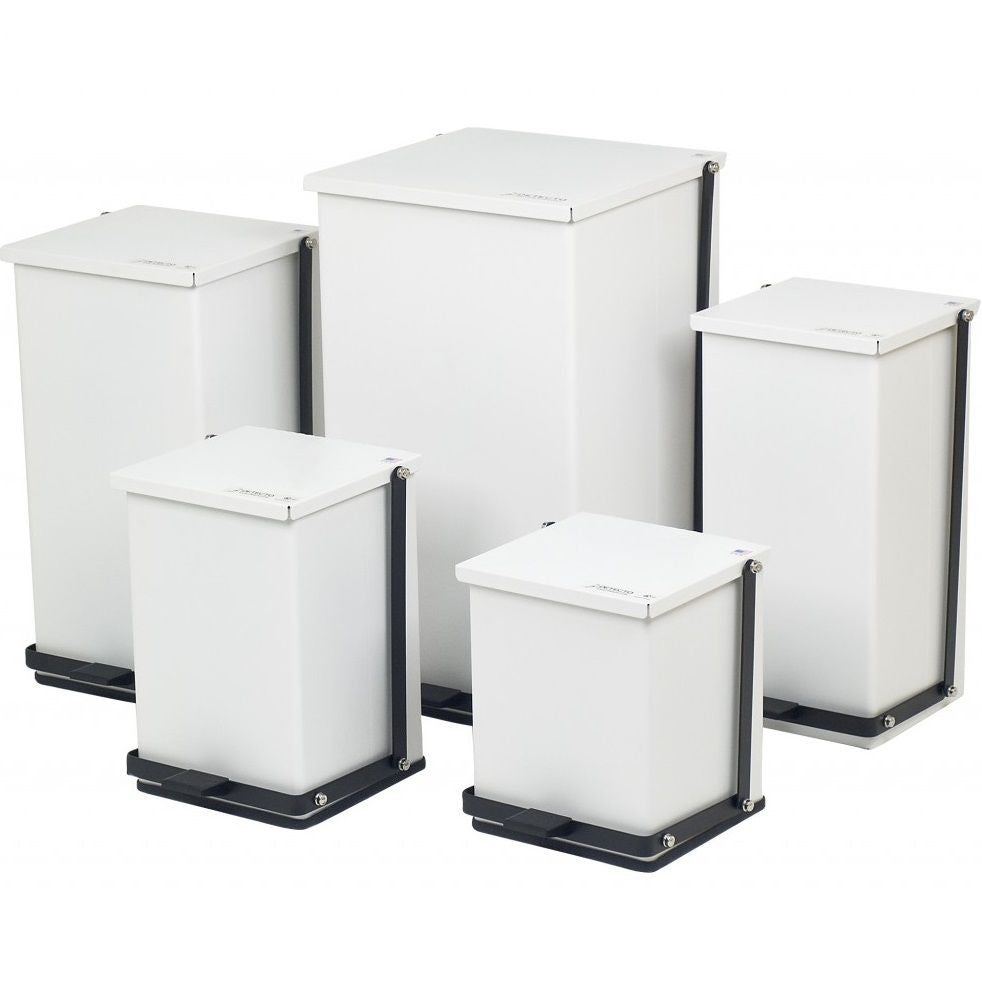Guardians of Tidiness: Resident Medical Waste Removal Service for Your Satisfaction
Guardians of Tidiness: Resident Medical Waste Removal Service for Your Satisfaction
Blog Article
Remain Ahead of Regulations: Specialist Recommendations on Medical Waste Disposal
In a globe where the medical care sector is continuously advancing, it is essential for clinical facilities to remain in advance of policies when it involves the proper disposal of clinical waste. With rigid standards and frequent governing changes, it can be testing to navigate the intricacies of this process. With professional guidance, facilities can guarantee conformity and alleviate threats associated with incorrect waste disposal. From recognizing the various classifications of medical waste to applying the appropriate collection and partition approaches, this discussion will offer valuable understandings and workable pointers to aid centers remain ahead of guidelines in the ever-changing landscape of medical garbage disposal.
Comprehending Clinical Waste Categories
Recognizing clinical waste groups is necessary for appropriate disposal and monitoring in healthcare facilities. Medical waste describes any waste generated by medical care activities that may present a risk to public wellness or the setting. It is crucial to categorize clinical waste precisely to guarantee its safe handling, disposal, therapy, and transport.
There are several classifications of clinical waste that healthcare facilities require to be accustomed to. The most common classifications consist of transmittable waste, pathological waste, sharps waste, pharmaceutical waste, and chemical waste. Each category has particular standards and laws for its proper administration and disposal.
Contagious waste consists of products infected with blood or various other bodily fluids, such as gloves, gowns, and lab cultures. Pathological waste refers to human cells, body organs, or body components that call for special delivery and disposal. Sharps waste consists of made use of needles, syringes, and various other sharp objects that can cause injury and transmit infections. Pharmaceutical waste makes up ended, unused, or polluted medications that require cautious handling and disposal. Chemical waste consists of solvents, anti-bacterials, and various other chemical materials made use of in health care centers.
Remaining Up-To-Date With Regulatory Adjustments
Remaining current with regulatory changes is crucial for health care centers to guarantee conformity and appropriate management of medical waste disposal. medical waste removal service. With guidelines constantly progressing, it is essential for healthcare centers to stay current to stay clear of penalties, fines, and prospective injury to the atmosphere and public health and wellness
To stay in advance of regulative modifications, medical care centers must develop a system for surveillance and monitoring updates. This can be done by registering for governing e-newsletters, going to workshops and meetings, and actively getting involved in industry organizations. Additionally, facilities need to assign a personnel or group in charge of staying notified and distributing information to appropriate stakeholders.
Normal communication with regulative companies is additionally essential. Healthcare centers must establish partnerships with local, state, and federal agencies to guarantee they are mindful of any kind of adjustments in regulations that may influence their waste administration methods. This can be done through routine meetings, engagement in public remark durations, and positive engagement with governing firms.
Furthermore, healthcare facilities must think about partnering with waste monitoring business that specialize in clinical garbage disposal (medical waste disposal services with WasteX). These business are typically skilled in the newest laws and can supply advice and assistance to ensure conformity
Implementing Correct Collection and Segregation Approaches
To efficiently manage clinical garbage disposal, medical care facilities need to establish appropriate collection and partition techniques based on regulatory standards. Implementing these approaches makes certain the safe handling and disposal of possibly hazardous products, shields the environment, and minimizes the risk of infections and injuries to healthcare employees and the basic public.
Correct collection and partition techniques include using assigned containers and labeling systems. Healthcare centers should provide plainly classified containers for various sorts of medical waste, such as sharps, infectious waste, pharmaceutical waste, and non-hazardous waste. These containers should be color-coded and plainly marked to avoid complication and advertise simple identification.
In addition, medical care facilities should educate their personnel on the appropriate procedures for accumulating and segregating medical waste. This consists of informing them on the different kinds of waste, the suitable containers to use, and the importance of adhering to guidelines and guidelines. Normal training sessions and correspondence course need to be carried out to ensure that team members remain updated on best methods.
Additionally, medical care facilities need to establish a system for normal collection and disposal of medical waste. This might involve partnering with accredited waste management business that specialize in clinical garbage disposal. These business will certainly ensure that the accumulated waste is carried and dealt with in conformity with regulatory demands.
Picking the Right Disposal Methods

Incineration is one of the most typical and reliable approaches for getting rid of specific kinds of clinical waste, such as pathological waste and sharps. It entails the regulated burning of waste at heats, lowering it to ash. However, incineration can launch hazardous pollutants into the air and add to air pollution.

Other disposal methods consist of chemical treatment, microwave therapy, and landfilling. Chemical treatment entails the use of chemicals to reduce the effects of the waste and disinfect. Microwave therapy uses microwave power to heat and decontaminate the waste. Landfilling includes burying the waste in a marked garbage dump area (medical waste disposal services with WasteX). Nonetheless, landfilling ought to be the last option as a result of the possible risk of contamination to medical waste disposal services with WasteX soil and groundwater.
Guaranteeing Compliance With Paperwork and Training
After very carefully taking into consideration the ideal disposal approaches for clinical waste, medical care centers have to make certain conformity with laws and decrease ecological influence by carrying out efficient paperwork and training procedures. This step is essential in maintaining a safe and lasting atmosphere for both health care workers and the general public.

Training is equally vital in ensuring compliance with regulations. Healthcare workers that handle clinical waste should receive proper training on waste partition, handling, and disposal procedures. This training must cover subjects such as the correct use personal protective devices, recognition of various kinds of waste, and the correct disposal techniques for every waste group. By giving comprehensive training, healthcare facilities can equip their personnel to make enlightened choices and decrease the threat of improper garbage disposal.
Conclusion
To conclude, staying in advance of laws in clinical garbage disposal is vital for health care facilities. medical waste removal near me. Recognizing the various classifications of medical waste, staying updated with regulatory changes, applying correct collection and segregation methods, picking the ideal disposal techniques, and guaranteeing compliance via paperwork and training are all vital steps. By adhering to these standards, healthcare organizations can properly get rid of and handle of medical waste in a secure and accountable fashion
From recognizing the different categories of clinical waste to executing the right collection and partition methods, this conversation will provide actionable pointers and important insights to assist facilities stay ahead of regulations in the ever-changing landscape of clinical waste disposal. - medical waste disposal services with WasteX
The most usual categories include contagious waste, pathological waste, sharps waste, pharmaceutical waste, and chemical waste. Medical care centers need to provide clearly labeled containers for different types of medical waste, such as sharps, contagious waste, pharmaceutical waste, and non-hazardous waste. Health care centers must look at this now develop a thorough system to videotape and track all aspects of clinical waste disposal, consisting of kinds of waste generated, quantities, and disposal methods used. Healthcare workers who handle medical waste should receive appropriate training on waste partition, handling, and disposal treatments.
Report this page